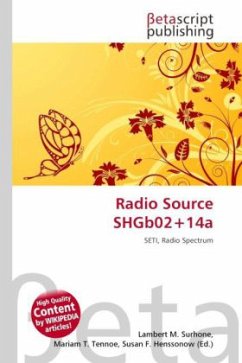High Quality Content by WIKIPEDIA articles! Radio source SHGb02+14a is a source and a candidate in the Search for Extra-Terrestrial Intelligence (SETI), discovered in March 2003 by SETI@home and announced in New Scientist on September 1, 2004.The source was observed three times at a frequency of about 1420 MHz, which is expected to be a frequency used by extraterrestrials due to its proximity to one of the main frequencies at which hydrogen absorbs and radiates photons. There are a number of puzzling features of this candidate, which have led to a large amount of skepticism. The source is located between the constellations Pisces and Aries, a direction in which no stars are observed within 1000 light years. It is also a very weak signal. The frequency of the signal has a rapid drift, which would correspond to it being emitted from a planet orbiting nearly 40 times faster than the Earth around the sun. Each time the signal was detected, it was again at about 1420 MHz, the originalfrequency before any drift. The signal may represent a resonating pulsar across a Gaussian belt.
Bitte wählen Sie Ihr Anliegen aus.
Rechnungen
Retourenschein anfordern
Bestellstatus
Storno








